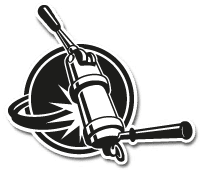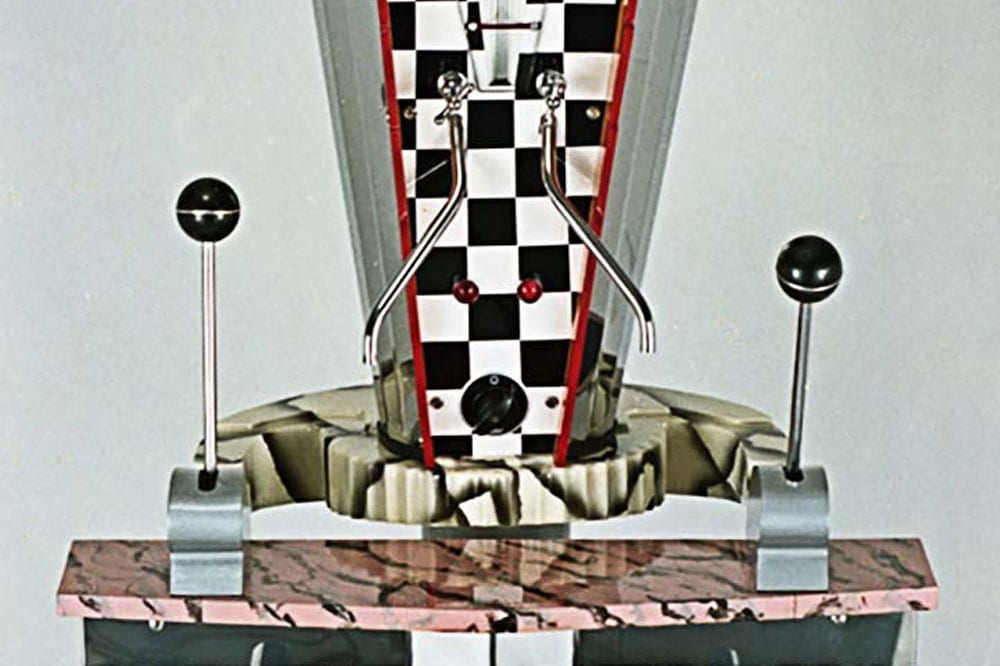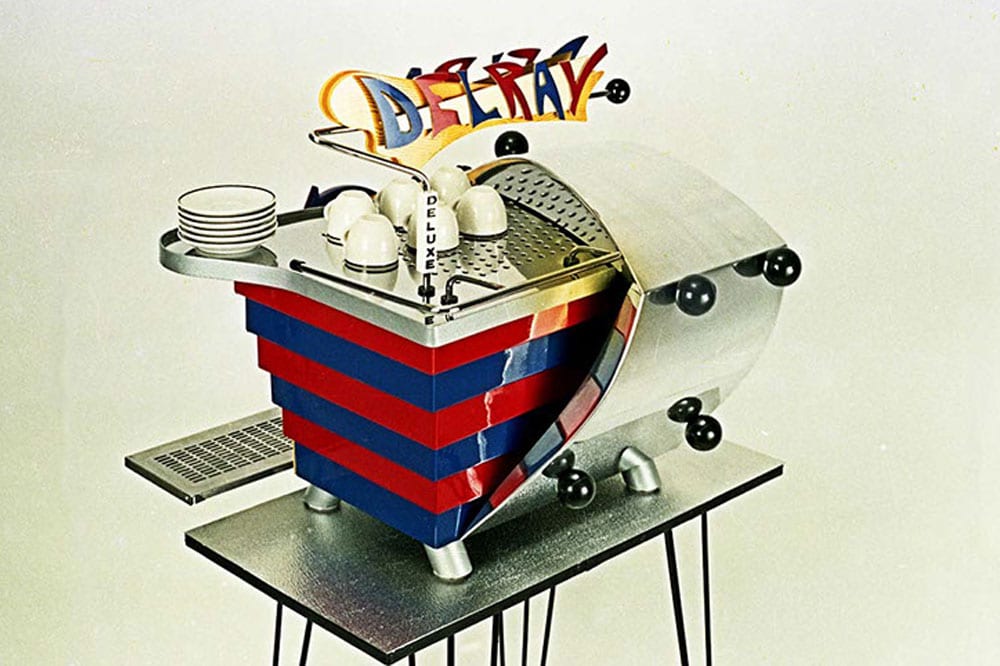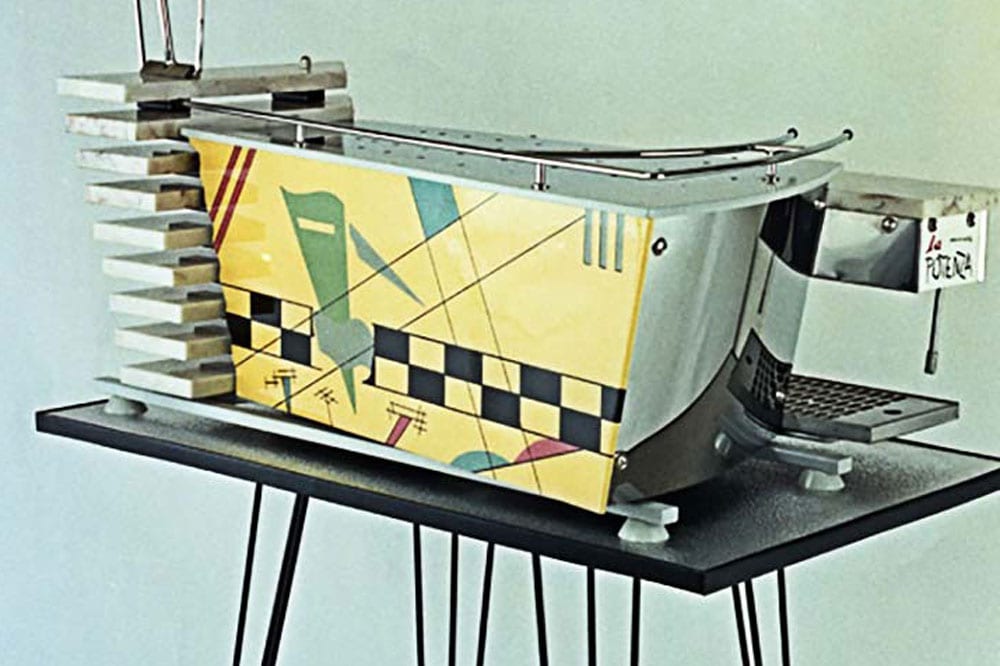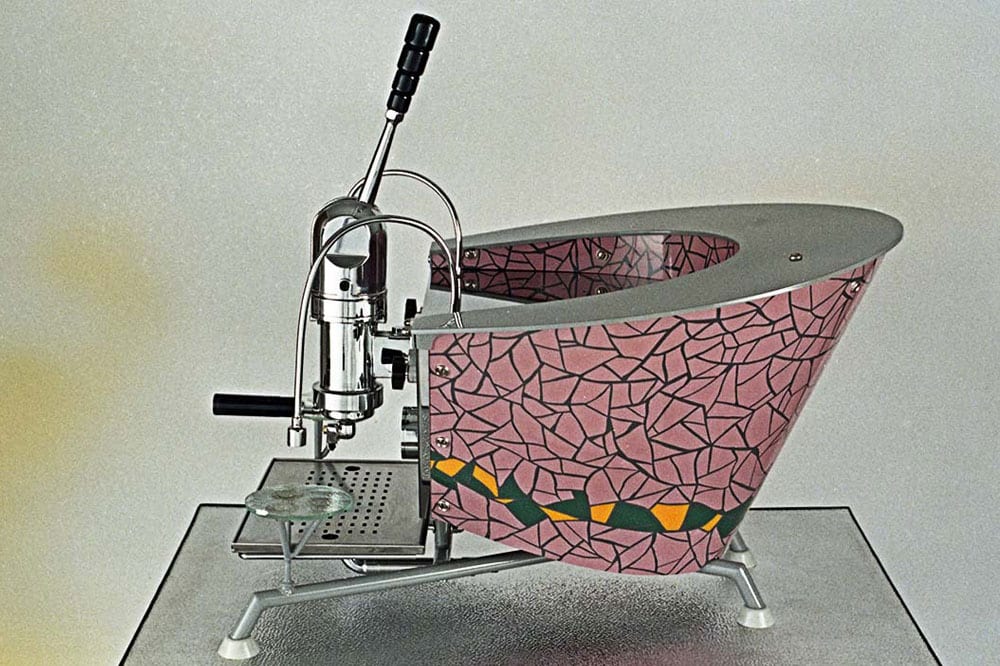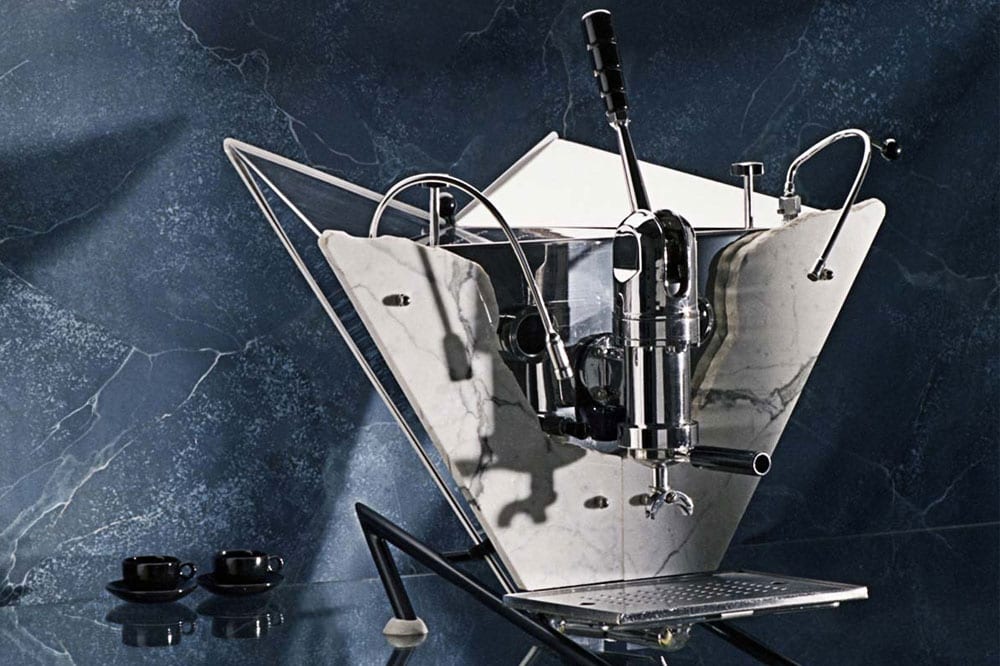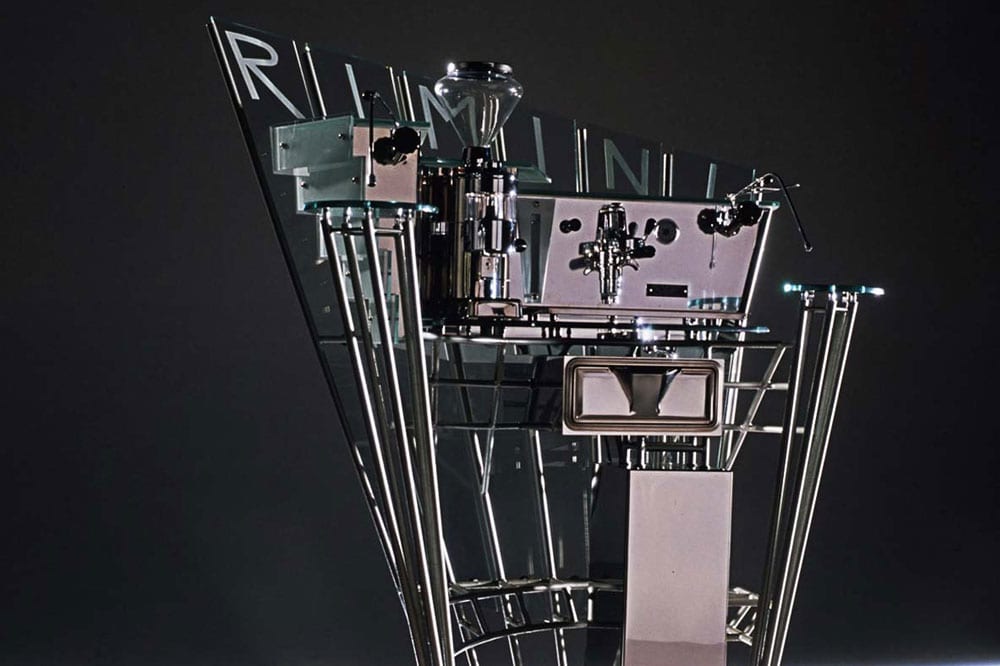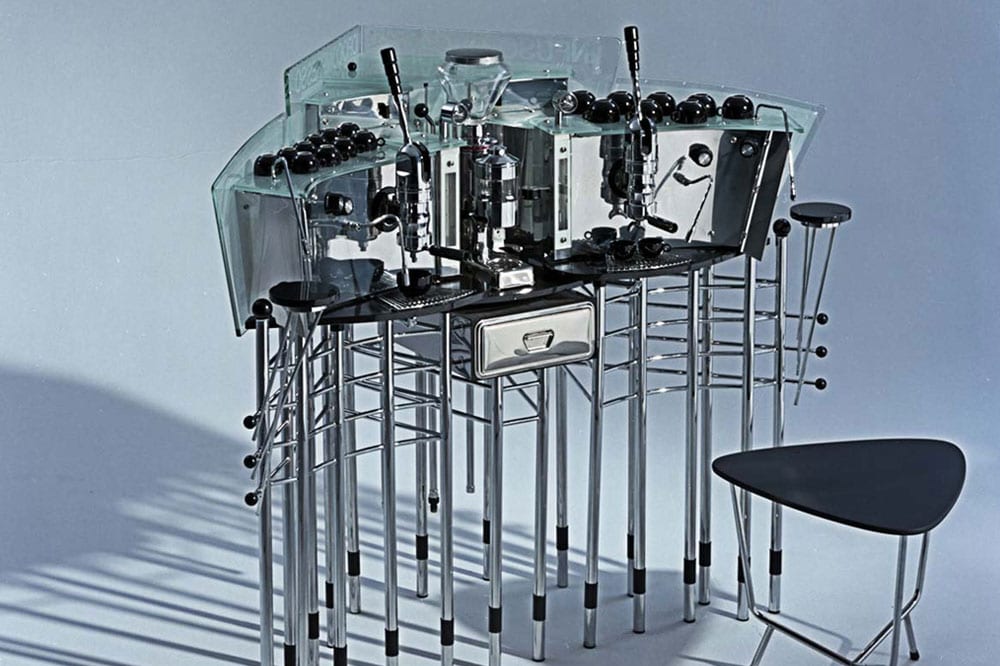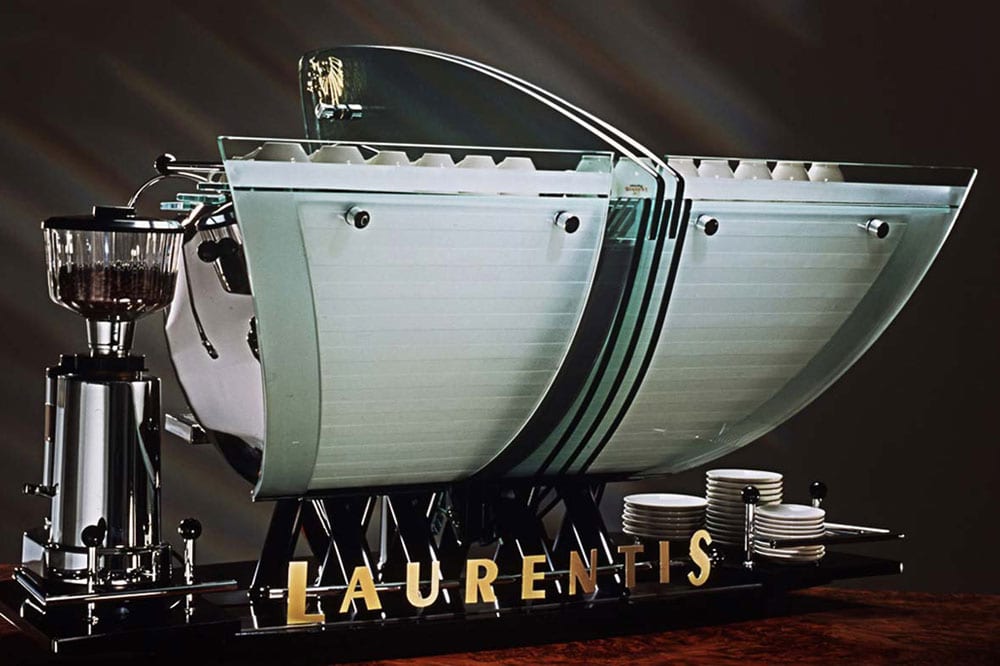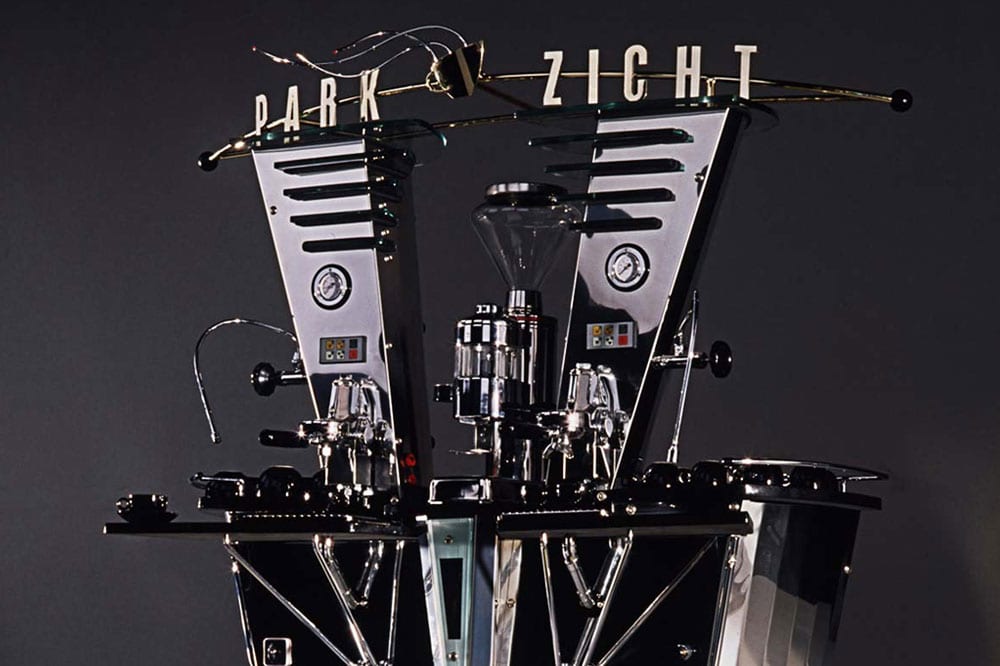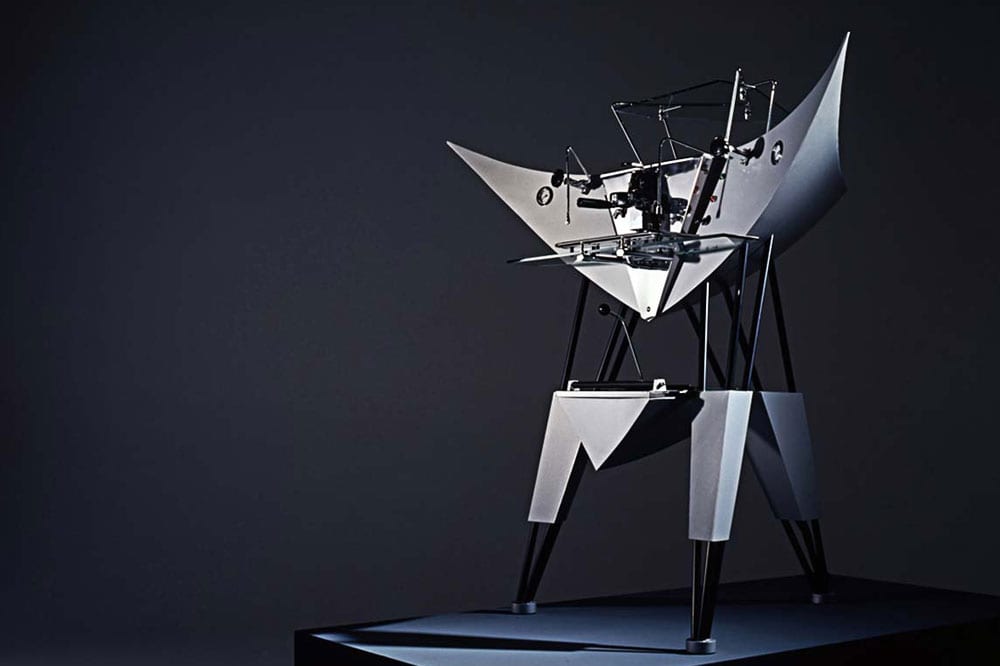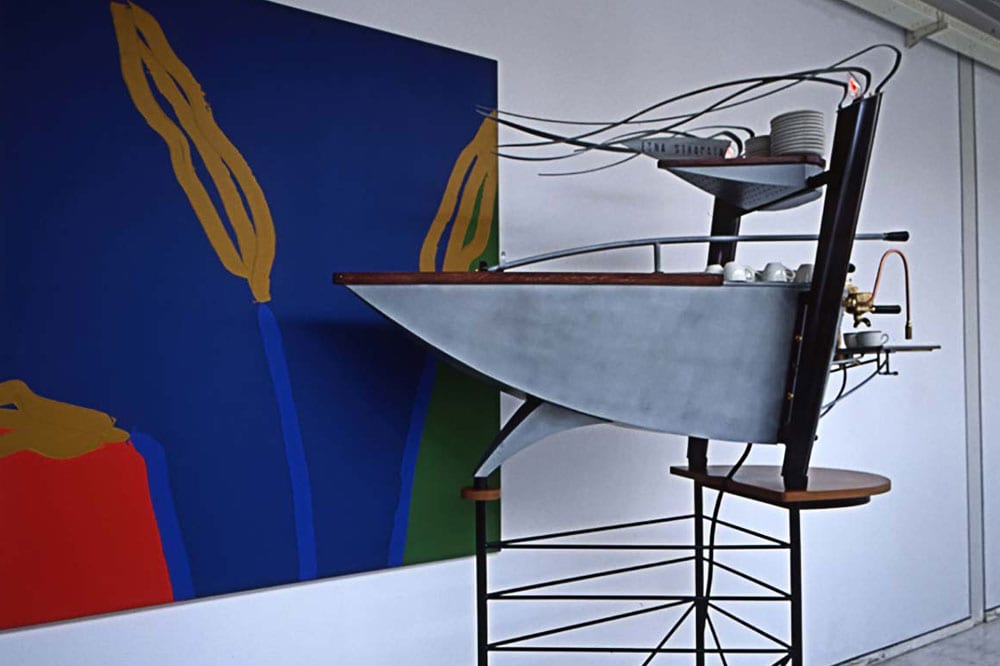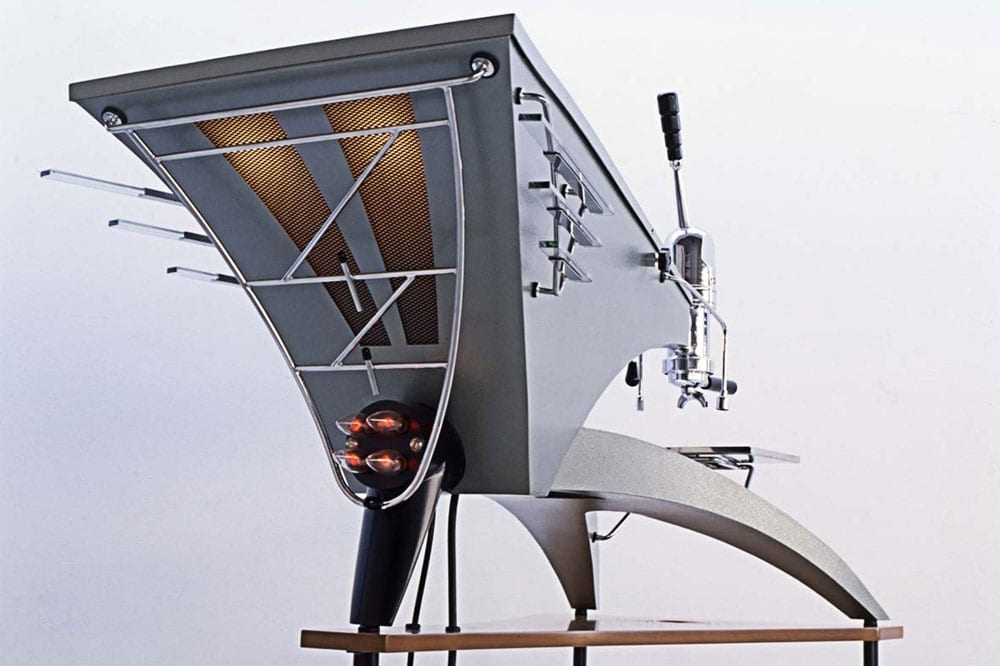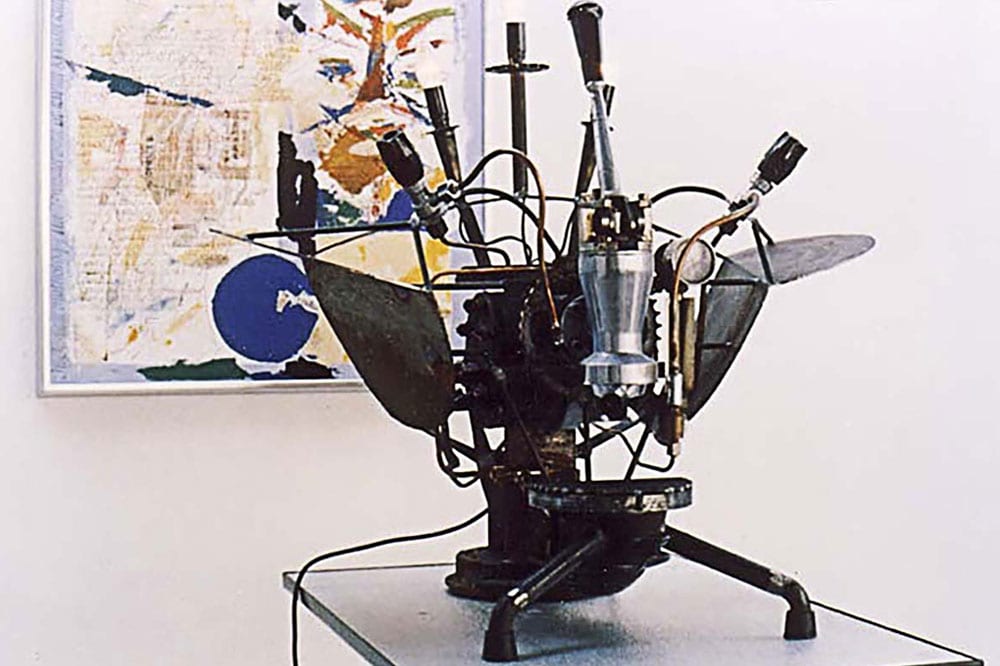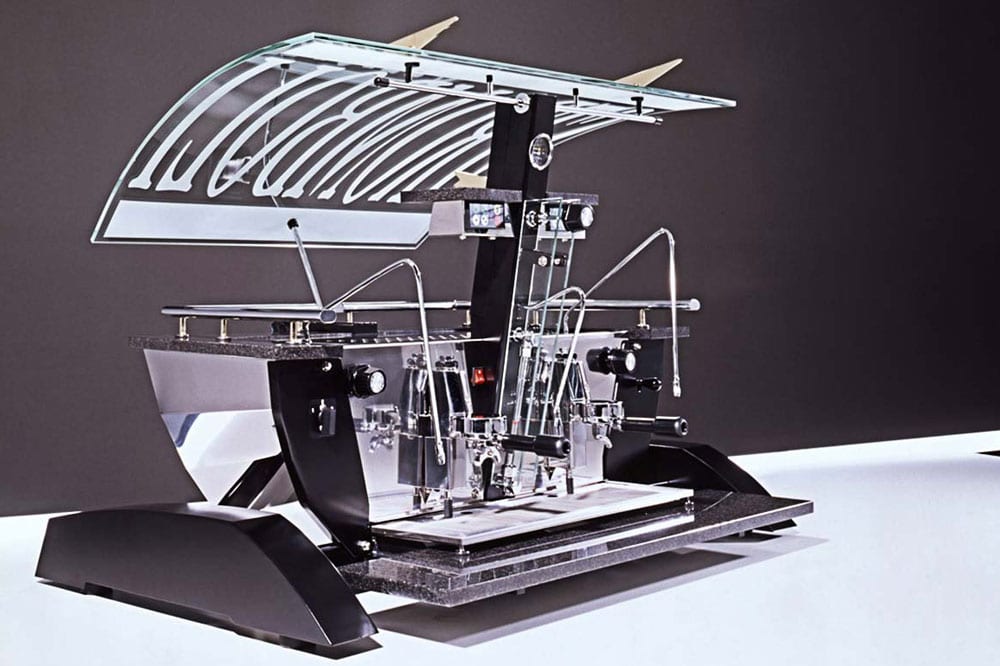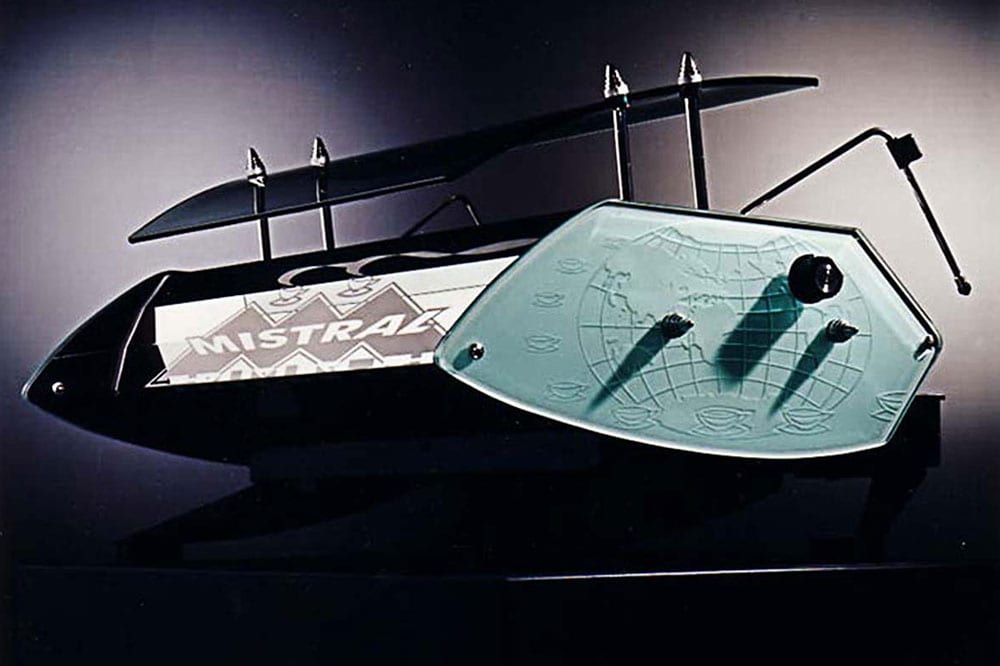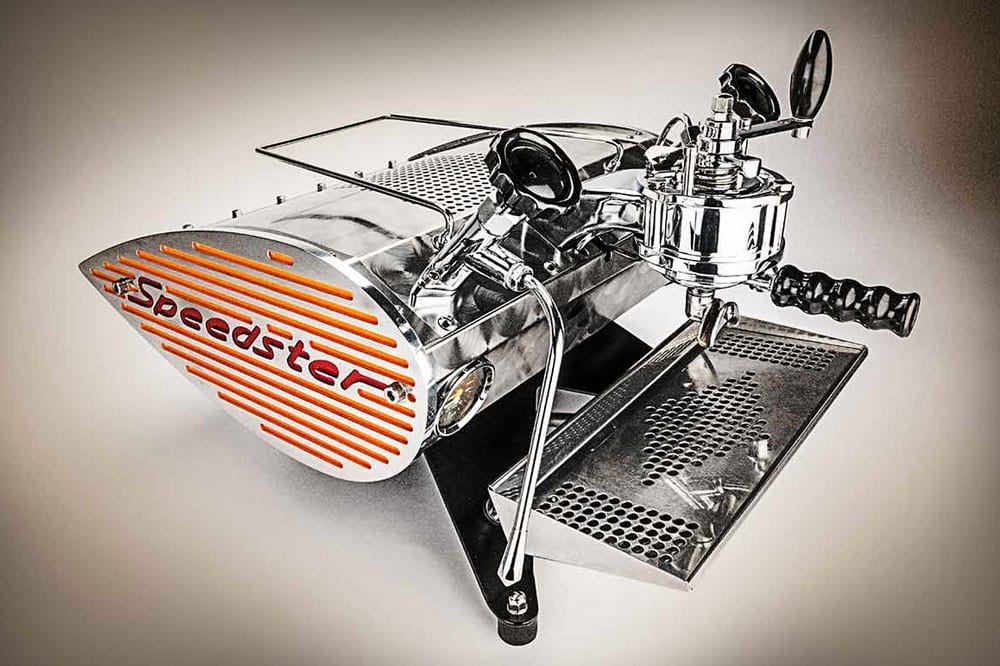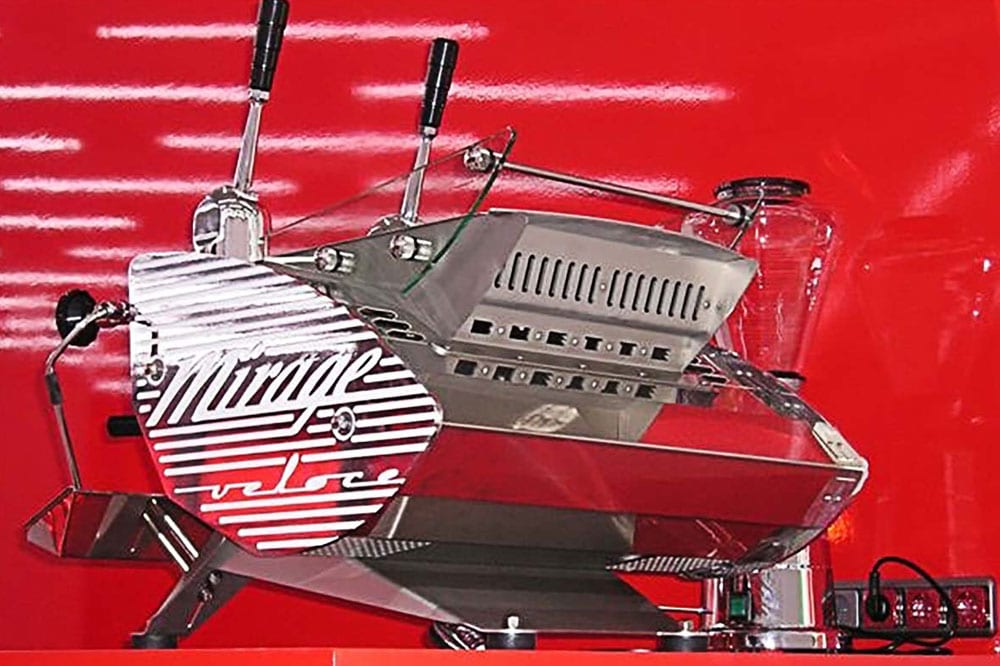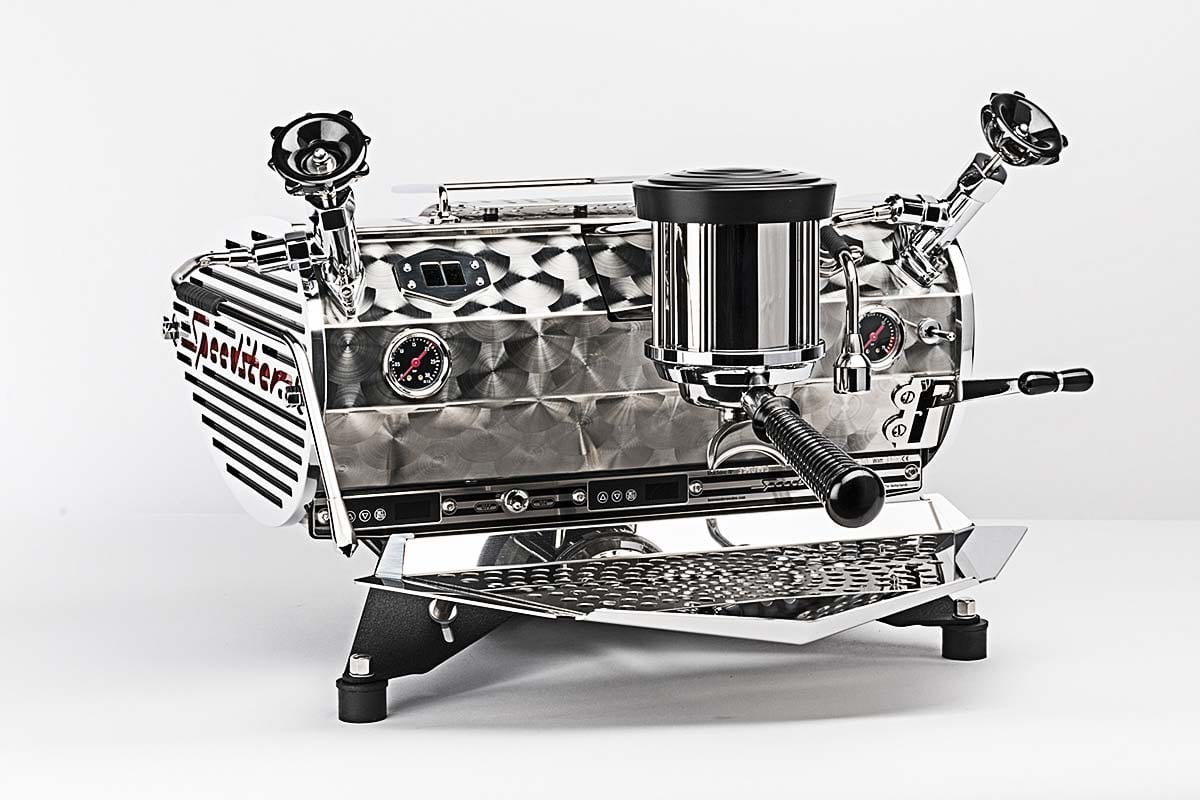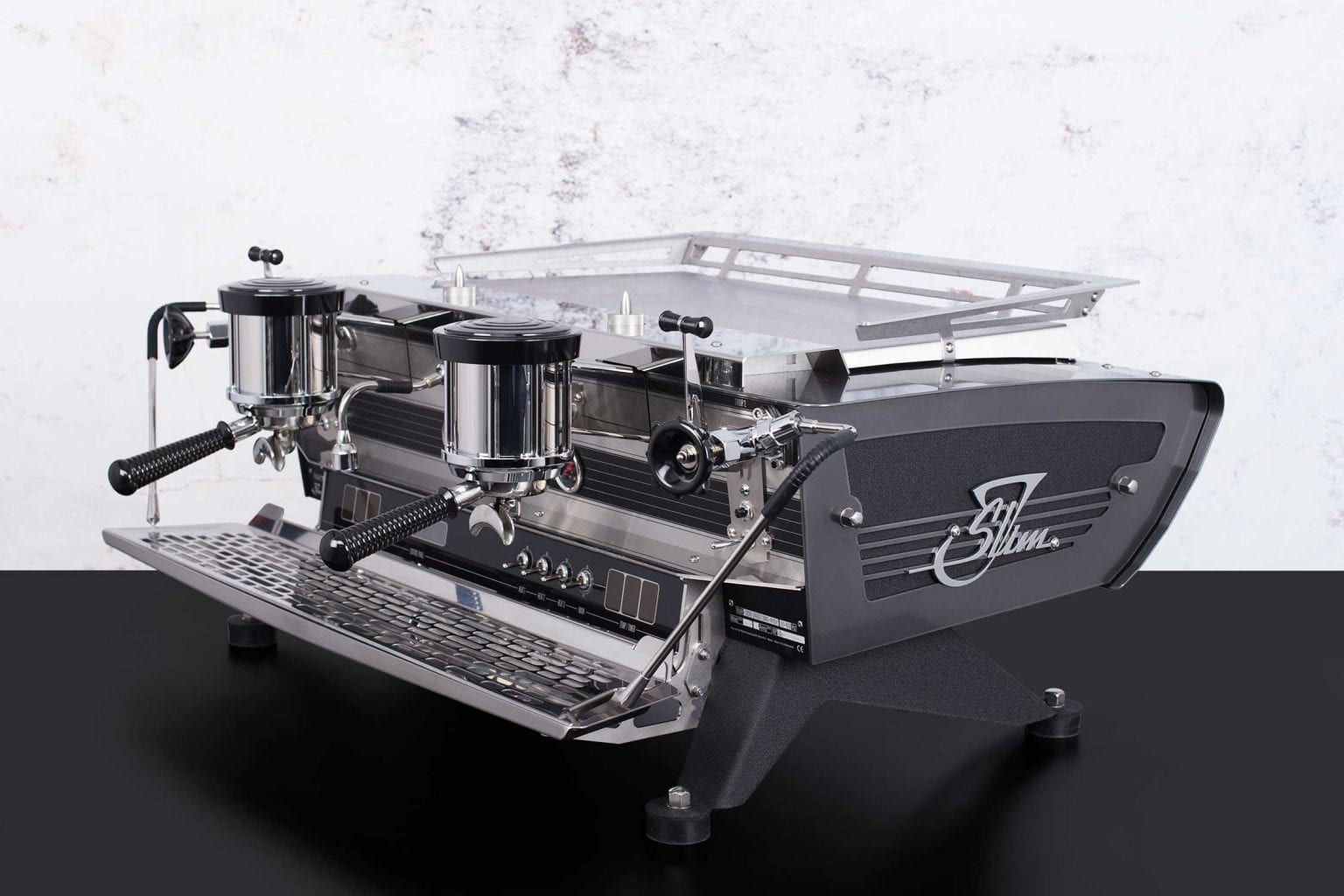DELRAY DELUXE
— 1985 —
The second ever machine, built when still at school. This time the machine actually functioned. The idea was to have a modern machine pop out of an old shape.
Or maybe the other way around, the old shape still protectively hugging the new. When supplying coffee at the end of the year exhibition, Kees received an offer not to be refused, so this was the first machine sold.
RIMINI
— 1988 —
Huge stand-alone space-framed one-group machine, built for reception hall of marketing company “Lenting & van Etten”. Rear of machine consists entirely of glass, matted where it covers the machine parts.
Fitted-out as a complete espresso brewing system, with grinder, knock-box and water-softener. Lots of light from within the machine, making it a living sculpture.
LAURENTIS
— 1989 —
Built on commission for the Laurentis coffee roasting company. Tube lights at the rear, illuminating the large bent glass plates, react on the boiler pressure making the machine seem to breath. Lots of details gold plated to keep their shine.
Because of the weight of all the glass and black granite, a special large bracket was constructed to lift the machine by 4 strong men.
PARKZICHT
— 1988 —
Designed and constructed for Café Parkzicht, Gorinchem, NL. White light inside both towers reacts on boiler pressure, illuminating the glass lines and the gold plated letters from behind. Tiny red lamps at the heat waves from the cup light up whenever coffee is brewed.
To check the boiler level, a small light is installed at the glass tube between the drain trays.
AERO
— 1988 —
Aeroplane styled machine in plain steel with protective transparant coating. 2 mtr. between wing tips. When large horizontal lever is pulled towards barista, the machine starts brewing. Left and right cup warmer trays are hinged at rear, can be opened like flaps to check inner parts.
Created as free work, later sold with matching stand and grinder to headquarters of Lage Landen Autolease.
CAP GEMINI II
— 1991 —
Espresso-sculpture, the second sculptural machine built on commission for Cap Gemini Netherlands. Large as life (2 x 2 x 2 mtr.) .
The V-shaped box between the legs holds the knockbox and a large light box illuminating the machine’s belly (again reacting on the boiler pressure) and the large vertical gear lever.
SPEEDSTER LIMITED EDITION
— 2001 —
6 of these were done in 2001 as a quick fun project by Kees, each sold to family and friends.
When after several years requests for this machine were still coming in, the original design was used to create a completely new one-group machine with fully new developed group and boilers.
MIRAGE IDROCOMPRESSO
— 2003 —
The lever group version of the Mirage, called Idrocompresso, developed in 2003. This one was done for “Art Gadgets” in Eindhoven, NL. They wanted a cold metal, technical look: Stainless steel frame sandblasted instead of powder coated in black.
Veloce aluminium side-panels, lettering in grey, combined with high gloss bodywork. For some years we made true glass hoppers, as can be seen behind the machine.
